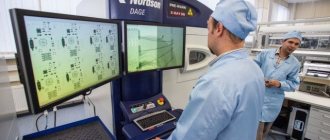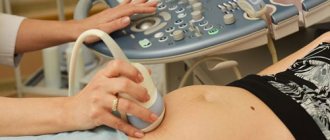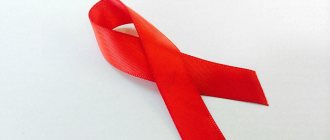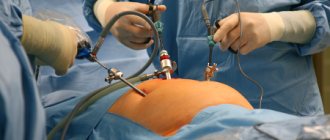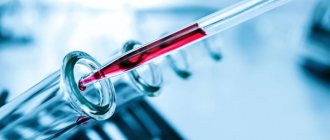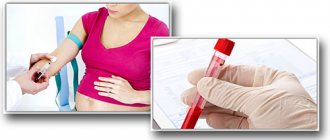In the time since the discovery of the human immunodeficiency virus, serious progress has been made in treatment. But until now, those infected and their loved ones are interested in the viral load of HIV, its indicators and the norm. These data are taken into account when selecting therapeutic methods that extend years. In the absence of treatment, doctors predict up to 10 years of life for people with HIV; with properly selected treatment - up to 70. Not the least important place in such a study is occupied not only by antibodies to HIV infection, but also by the number of cells responsible for immunity, T-lymphocytes, or CD-4 - they are the ones who can protect the infected person from concomitant diseases leading to mortality or AIDS. A general blood test, also prescribed for HIV, helps to clarify the situation. If the level of antibodies to the virus is low, it is enough to undergo examination twice a year; if increased during pregnancy, taking rotating groups of antiretroviral drugs - once every 2-4 weeks - 3 months.
Blood tests for human immunodeficiency virus
The study of biological material, which is blood, remains the most informative method. Before taking an HIV test, they try to take into account the behavior of the virus. It manifests itself in plasma, although it is found in seminal fluid and vaginal mucus. HIV testing is a multicomponent diagnosis. Blood is taken for various studies:
- Blood test for HIV. Often the virus is first detected when taking a blood test for HIV and hepatitis.
- A general blood test is also prescribed for HIV. It will show specific indicators of leukocytes, platelets, hemoglobin, erythrocyte sedimentation rate (ESR). But these same nuances sometimes indicate other viral infections; in case of deviation from the norm, other blood tests are prescribed.
Important! If you don’t know how HIV tests are done, on an empty stomach or not, doctors will answer: biological material is collected on an empty stomach. This ensures reliable results.
- Rapid tests for HIV. They give results within 30 minutes. They study not only blood, but also saliva and urine. The test is informative in terms of diagnosing infection and the number of antibodies. Sometimes it happens that the test for HIV is positive, but the analysis is negative. The result is false negative if the infection occurred recently. You will need to undergo this examination in 6 weeks.
- Enzyme immunoassay. Serum is isolated from the blood, where antibodies to the human immunodeficiency virus are looked for. When patients ask how long it takes to test for HIV, doctors answer: up to 10 days. But even here the possibility of erroneous results remains. This is affected by autoimmune diseases, exacerbations of chronic diseases, and cancer.
When wondering where you can get tested for HIV, you should contact a private laboratory, AIDS and HIV prevention and control centers, but the easiest way is to donate blood at a public clinic at your place of residence. Anonymity remains a positive aspect of every medical institution.
You can find out how much your AIDS test costs in advance. The price for HIV analysis ranges from 300 to 12,000 rubles. Research in private laboratories and highly sensitive tests remain more expensive.
HIV.AIDS.STD.
PCR (polymerase chain reaction) is a method of molecular genetics that allows you to analyze any short sequence of DNA (or RNA) even in samples containing only minute amounts of DNA or RNA, thereby determining the presence/absence of a pathogenic pathogen (to determine, for example, whether there is human HIV or hepatitis B virus or Mycobacterium tuberculosis). PCR is used to reproduce/multiply/clone (amplify) selected sections of DNA or RNA for analysis.
The PCR method is so simple that even a schoolchild can do it)
Previously, DNA amplification involved cloning segments of interest into bacterial expression vectors and took weeks. But now, when PCR is done in test tubes, it only takes a few hours . PCR is highly efficient , so that huge numbers of copies can be made from DNA.
DNA sequence and nucleotide correspondence.
May the hand of the giver never fail
Project "AIDS.HIV.STD." is a non-profit, created by volunteer HIV/AIDS experts at their own expense to bring the truth to people and to be clear before their professional conscience. We will be grateful for any help to the project. May it be rewarded to you a thousandfold: DONATE .
Moreover, PCR uses the same molecules that nature uses to copy DNA:
- Two "primers", short single-stranded DNA sequences that are synthesized to match the start and end of the DNA stretch to be copied.
- An enzyme called a polymerase that moves along a segment of DNA, reads its code and assembles a copy.
- A bunch of DNA blocks that this polymerase needs to make.
That is, PCR is a technique in which DNA particles (sometimes RNA) are multiplied in a certain solution or on a special surface where they can be deposited.
PCR is a technique that allows scientists to find a needle in a haystack and then build a haystack from those needles.
The key to understanding PCR is the knowledge that every person, animal, plant, parasite, bacteria or virus contains genetic material - DNA (or RNA) sequences (nucleotide sequences or pieces of DNA (or RNA)) that are unique to each individual. That is, if the sample contains segments of DNA or RNA,
the task of PCR as a method is to multiply (amplify), make as many copies of them as possible so that it is possible to identify who they may belong to (a specific person, animal or pathogenic organism), even if there are only traces of the presence of DNA/RNA.
Equipment for PCR.
However, PCR amplification is only part of the diagnostic test. After amplification, the amplified segments must be compared with other nucleotide segments , but from a known source (for example, a specific person, animal or pathogenic organism). This comparison of unique segments is often performed by placing PCR-generated nucleotide sequences next to known nucleotide sequences from humans, pathogens, or other sources in a special gel.
When an electric current passes through the gel, the different nucleotide sequences form bands that resemble a "ladder" according to their electrical charge and molecular size. This is called gel electrophoresis. They migrate to the same levels in the gel, showing the identity of the nucleotide sequences. This method is one of the most popular late-stage PCR tests.
How does PCR work?
In 1983, Kari Mullis developed the basic steps to amplify DNA sequences. He and Michael Smith were awarded the Nobel Prize for the development of PCR in 1993.
PCR is carried out in one test tube with the appropriate chemicals and at a certain heating temperature.
The following reagents or chemicals are required:
- A sample containing a nucleotide sequence (from blood, hair, pus, skin, etc.).
- DNA Primers: Short single-stranded DNA that is attached to nucleotide sequences that promotes the synthesis of a complementary strand of nucleotides.
- DNA polymerase: An enzyme that, when DNA binds to a primer, moves down a DNA fragment adding DNA building blocks to form complementary base pairs and thus synthesizes the complementary nucleotide chain of DNA (introduction of heat-stable DNA polymerase, Taq polymerase, derived from heat-resistant bacteria, significantly improves PCR ability).
- A large excess of DNA building blocks called nucleotides (adenine, thymidine, cytosine, and guanine, abbreviated as: A, T, C, and G, respectively) in solution. When these blocks are joined together, they form a nucleotide sequence, or a single strand of DNA. When these building blocks bind their complementary building block with weak hydrogen bonds (for example, A will only bond to T and G will only bond to C) a complementary DNA nucleotide sequence is formed that is linked to the original single-stranded DNA. When binding is complete, complementary double-stranded DNA is formed in a specific sequence.
Kari Mullis is a very interesting, cool guy, look how interestingly he talks about how he came up with PCR:
He believes in astrology, but does not believe that HIV causes AIDS.)
The polymerase chain reaction then begins with a segment of DNA from the sample, which is placed in a tube containing the above reagents. The solution is heated to 94°C. Heating breaks the hydrogen bonds that allow complementary DNA strands to form, so only single strands exist in the mixture (this is called double-stranded DNA denaturation).
PCR stages
The mixture is allowed to cool to 54°C. At this temperature, DNA primers and DNA polymerase bind to individual single-stranded DNA (this is called DNA annealing). Because the building blocks are in excess (high concentration) in the mixture, the polymerase uses them to create new complementary strands of DNA (called DNA extension), and this process occurs faster at 72°C. This process creates a new double-stranded DNA molecule from each of the single strands of the original molecule.
This cycle is repeated approximately 40 times in a machine called a thermal cycler, which automatically repeats the heating-cooling cycles, with the amount of each DNA sequence doubling each time the heating-cooling cycle is completed. What was originally one short segment of DNA could be expanded to about 100 billion copies after 40 doubling cycles.
When is a PCR test needed?
The PCR test is the basis for a number of tests that can answer many different medical questions that help doctors diagnose and treat patients. For example, PCR tests can detect and identify pathogenic organisms in patients, especially those that are difficult to culture (such as HIV and other viruses and some fungi ).
Some doctors order PCR tests to help diagnose genetic diseases , while other doctors use PCR to discover biological relationships, such as identifying the parents of children . PCR tests are also used to identify and characterize genetic mutations and rearrangements found in certain cancers .
However, PCR tests have been modified and introduced into many aspects of scientific research, including evolutionary biology, genetic fingerprinting, forensic research, and many others.
What is RT-PCR?
Reverse transcriptase PCR (RT-PCR) is a PCR test that is designed to detect and measure the amount of RNA. Although initial PCR tests amplified DNA, many viruses and other biological components (such as mitochondria) use RNA as their genetic material. RT-PCR differs from regular PCR by first taking RNA and turning the RNA strand into a DNA strand. This is done with essentially the same method for PCR described above, except using an enzyme called reverse transcriptase instead of DNA polymerase.
Reverse transcriptase allows one strand of RNA to be converted into a complementary strand of DNA. Once this reaction occurs, the routine PCR method can then be used to amplify the DNA. RT-PCR is used to detect and study many RNA viruses. RT-PCR should not be confused with another variant of PCR called real-time PCR.
Real-time PCR is a variation of PCR that allows analysis of amplified DNA within the usual 40 cycles of the procedure. Although the procedure is similar to conventional cycling PCR, real-time PCR uses fluorescent dyes attached to some of the building blocks or small nucleotide strands. Depending on the method used, fluorescence occurs when amplified DNA strands are formed. The amount of fluorescence can be measured over 40 cycles and allows researchers to measure specific products and their quantities during amplification cycles.
This often allows researchers or technicians to skip gel electrophoresis or other secondary procedures required to analyze PCR products, thereby providing faster results. Real-time PCR and RT-PCR are variations or modifications of the original PCR test. However, there are many more options (at least 25) that exist and are used to solve specific problems. They all have different names such as assembly PCR, hot start PCR, multiplex PCR, solid-state PCR and many more.
PCR will continue to be developed to help answer many other questions in medicine, biology and other fields of science.
What is a PCR test for HIV?
PCR (polymerase chain reaction) is a method of multiplying the genetic material of a virus, an analysis that determines the genetic material of the virus - HIV RNA or DNA.
If the virus is contained in a minimal amount, then as a result of the reaction this amount increases many times over. Therefore, PCR has a high diagnostic value.
Typically, this test is used to detect HIV in donated blood or to early detect the presence of HIV in the body before specific antibodies to HIV are produced. Specific antibodies are detected by conventional HIV tests (ELISA), but only 1-3, rarely 12 months after infection. And with the help of PCR you can give a fairly accurate answer after 14 days with 98% confidence and even after 5 days, but then the reliability will be 80%. HIV PCR is an expensive and more labor-intensive test than ELISA, so it is not used by everyone , but only for special indications (donors who suffered a medical accident with an HIV-infected person) or for a fee.
Life cycle of HIV (diagram)
Qualitative PCR test for HIV
Qualitative PCR analysis for HIV determines whether there is an HIV-1/HIV-2 virus or not, but it does not determine the number of copies of the virus (quantitative PCR is used to determine the number). High-quality PCR is NOT done for those who have a known diagnosis of HIV infection. It is given only to those who do not yet know whether they are infected with HIV or not.
This is a method for determining the complementary DNA region in the genome of a lymphocyte cell affected by HIV. Those. It is not the virus itself that is determined, but the material that the virus integrates into the cell. Its DNA will already be stored in the nucleus of the cell, from which it will then be read and multiply (copy itself).
Quantitative PCR test for HIV
Quantitative PCR analysis for HIV RNA - determines the number of copies of the virus RNA in the blood (DNA PCR is used to determine the virus in cells, for example in children). It is done only in HIV-infected people to monitor treatment, determine the severity of the disease process, and the effectiveness of treatment.
How long after infection can HIV be detected using the PCR method?
How many days later can I take an HIV PCR test after contact with an HIV-positive partner?
HIV can be detected using PCR 4-14 days after infection. A negative PCR result for HIV is reliable after 14 days after risky contact, but according to current standards, testing using ELISA is still required.
How is DNA PCR different from HIV RNA PCR?
RNA is commonly used in quantitative tests to assess viral load in diagnosed individuals, for example to assess the effectiveness of therapy.
DNA - in mononuclear cells, for example, for diagnosis in children, where maternal antibodies to HIV prevent the use of the ELISA method.
Both tests can be both quantitative and qualitative.
Both of them can be used in special cases for diagnostics, but taking into account the specific limitations imposed by the technical parameters of the system, i.e. as prescribed by a doctor.
Can HIV PCR be false positive, reasons?
If everything was done correctly : the nurse did not mix up the tubes, looked at the passport before drawing blood, labeled the tube correctly, wrote out the directions correctly, etc., and the laboratory specialist (usually a laboratory assistant) did everything according to the instructions, they were all the requirements of laboratory regulations were met (for example, the biomaterial was correctly “excavated”, without cross-contamination (contamination), etc.) and a high-quality test system was used, THEN PCR CAN be false positive only in 2% of cases (this is due to the sensitivity of the used test systems) .
But if mistakes were made on the part of the staff of the medical institution, then PCR may be false positive in more than 2% of cases.
How is PCR testing for HIV performed?
To test for HIV using the PCR method, blood is donated from a vein, preferably (but not necessarily) in the morning on an empty stomach.
Where can I get tested for HIV PCR?
To do this, you need to enter into the search of your browser “ take HIV PCR” and add your locality to the request and you will see organizations that are engaged in PCR research in your area.
For example,
- Moscow: TsMD (2450 rub.), IAKI (2300 rub.).
- St. Petersburg: St. Petersburg AIDS Center.
- Ekaterinburg: KDL (2480 rub.).
- Samara: CityLab (1400 rub.).
- Krasnodar: KDL (3000 rub.).
- Minsk: Republican Center for Hygiene, Epidemiology and Public Health.
- Kyiv: First Independent Laboratory.
How much does a PCR HIV test cost?
About 1.5-3 thousand rubles. depending on the region.
What is the reliability of the results of a PCR test for HIV?
14 days after infection, the reliability of PCR for HIV is 100%, from 4-5 days - the reliability is 80%.
How long does it take to perform a PCR test for HIV?
Technically 4-6 hours , but in reality it depends on the organization of the laboratory and usually the result is given in 2-3 days.
PCR for HIV in a newborn baby
Since a child under 1.5 years old born from an HIV+ mother retains her antibodies against HIV, it is impossible to determine whether the child is infected with HIV or not using ELISA. In this situation, PCR is used:
- If a virus is detected in a 1-month-old child using PCR, it means he has become infected.
- If a child has a negative PCR at 1-2 months and 4-6 months, then provided that the mother did not feed him with her breast milk, the child is healthy.
What is the difference between PCR and ELISA?
PCR determines the virus itself, and ELISA determines the body’s reaction (in the form of antibodies) to the virus.
PCR detects the presence of the virus faster than ELISA.
New algorithm for detecting HIV.
Read more about other HIV tests —>>
Additionally read:
- Diagnosis of sexually transmitted diseases using PCR
- Interpretation of HIV and AIDS test results
Diagnostics
Conventionally, diagnostic studies are divided into 2 types. The first group helps determine the fact of infection. Such tests can establish control over the course of the infection and indicate the effectiveness of treatment.
The second group determines antibodies to the human immunodeficiency virus, p24 antigen (serological tests) and viral RNA, provirus DNA (molecular genetic tests).
A detailed diagnosis is prescribed after a general blood test has been performed, which is advisable to do in case of HIV. HIV infection occurs in different stages: from an asymptomatic state to an acute phase, like AIDS. During it, the body suffers from opportunistic diseases, while the immunity of healthy people can resist them. This will be demonstrated by general blood cell counts.
Diagnostics helps to determine the number of leukocytes. Future treatment and quality of life also depend on the ratio of them and antibodies to the virus. In addition to general methods, specific techniques are also used.
Polymerase chain reaction
This is one of the most effective methods for diagnosing infection. Its results are 90–99% true: the test does not detect antibodies to the virus, but its RNA. This HIV test has a short readiness time - up to 3 days.
Immunoblotting
This is a highly sensitive and not the cheapest method for recognizing a viral infection. It involves separating the viral proteins, after which they are transferred to a nitrocellulose membrane. After the electrophoresis procedure, its antigens, which differ in molecular weight, are compared with the samples on the test strip. The method shows at what stage of immunodeficiency a person is.
Who is prescribed PCR?
Determination of HIV infection using PCR, on the recommendation of a specialist, is carried out in the following cases:
- preliminary diagnosis. PCR accurately confirms or refutes the ELISA result;
- immunoblotting confirmed the diagnosis. Immune blotting is an additional way to study AIDS . Both methods are used together, which eliminates the possibility of misdiagnosis;
- if HIV status is confirmed, the effect of the chosen treatment is monitored using PCR;
- to test donor blood for the presence of HIV antibodies;
- to determine the HIV status of a newborn when the mother tests positive. PCR in the first days of life makes it possible to determine intrauterine infection or infection of the baby while passing through the birth canal. The test is performed 2–3 weeks after birth.
How long does it take to take a PCR test, and where can it be taken?
HIV PCR analysis is carried out in a special laboratory. The test itself and interpretation of the result do not require much time: a month or even a week. It takes up to 6 minutes to draw blood. In a normal case, a specialist will need no more than a day to make a diagnosis and issue a conclusion. The first 8 hours are spent studying the blood, the remaining time is spent on registration. The result can be collected the very next day after the sample is taken. The duration of express testing is 2 hours.
Attention! The compulsory medical insurance policy allows you to take the test for free at a public health care institution.
Almost any commercial laboratory is capable of conducting research, and on an anonymous basis. The person is assigned a special number, to which the results are then linked. This information is uploaded to the institution’s website in the user’s personal account.
Norms
In a healthy person, the CD-4 immune index is 400-500 – 1600 cells/ml. If the number decreases to 200-500, changing every six months by 45 units, there is a high probability of infection. But the possibility of diseases affecting immune processes, pregnancy and breastfeeding in women is also taken into account.
Also, a blood test for HIV has standards for infected people. If the cell count drops to 350, it’s time to start therapy. Thanks to this, concomitant diseases that are dangerous for infected people will not develop.
If the number has dropped to 200 units, highly active antiretroviral therapy is often prescribed. Those suffering from immunodeficiency are advised to get tested for HIV and hepatitis. Liver diseases often accompany a dangerous virus and aggravate the immune system.
Important! Half of the cases of infection are diagnosed after a blood test has been performed for hepatitis, rw and HIV: after a woman registers for pregnancy, during medical examinations, before donating blood.
ESR indicator for HIV
ESR is an indicator that increases during inflammatory reactions in the body.
Normally, it should not exceed 10 mm/h.
With recent HIV infection, this rate can increase significantly. Then he gradually returns to normal.
ESR reflects the activity of the immune system. This indicator corresponds to the level of cytokines. Including interleukin-6 and tumor necrosis factor α. In the future, an increase in the level of ESR can suggest an increase in the activity of HIV infection. Because this indicator increases during the period when there is a decrease in the number of CD4 cells.
What is viral load
Those infected are interested not only in the value of CD-4. The number of dangerous virus particles in the blood plasma is important. The load may show an erroneous result due to violation of test conditions, after vaccinations, or due to previous diseases. This also applies to healthy people. But if after a month the indicator increases by 3-5 times, this is a reason to think about it.
Much depends on the health status of the infected person. It is characterized by blood cells, in particular, those responsible for fighting foreign bodies, including viral infections.
About the indicators after the study using the polymerase chain reaction method
Using this method, HIV RNA and DNA are detected almost immediately after infection. But a final diagnosis is not made; mandatory confirmation by other methods is required. “Help me decipher the PCR result.” — you can hear such a request quite often. What is written in this case if an immunodeficiency virus is detected? When responding to the result of an analysis done using PCR, the number of RNA copies per milliliter of blood is indicated. The table below shows the result depending on the quantitative characteristics in the blood.
| Quantitative indicator (number of copies) | ||
| Less than 20 | From 20 to 10 6 | More than 10 6 |
| RNA concentration is insufficient to make a diagnosis (inaccurate) | Reliable | Viral load is high |
It is good to use the above table when testing for AIDS, since it can easily be used to determine the stage of the disease.
These tables, taking into account various test systems, are available in laboratory rooms for each method of enzyme immunoassay and immunoblotting.
They are often asked: “Decipher the answer after a polymerase chain reaction study using the CD4 indicator.” The normal number of CD4 cells is from 600 to 1900 cells per milliliter of biological material. This corresponds to HIV-negative status. But you need to know that these indicators, even in healthy people, are not in this range.
In the modern world, many laboratories already have good equipment with which you can completely examine the body for HIV infection.
Immune status and virus
The condition of an infected person depends on the ratio of the main indicators: the number of virus particles and CD-4 cells, immune status and viral load - mandatory parameters for diagnosis and possible treatment. The task of doctors is to increase the immune status that fights the virus. However, it is capable of infecting CD-4 cells, their number can sharply decrease to a critical level. That is why the patient is periodically diagnosed.
Voluntary examination
Three groups of indications may be the reason for voluntary testing for HIV infection. These are patients with symptoms of an acute illness, persons with signs of immunodeficiency, as well as people without any manifestations of HIV, but at high risk of this disease (detection of one or more risk factors indicating a significant likelihood of infection).
Symptoms that may be signs of HIV infection, which are a reason for examination:
- frequent loose stools, elevated body temperature or enlarged lymph nodes of two or more groups that persist for more than 1 month in a row;
- reduction in body weight by 10% or more, if there are no other explanations for weight loss (sports, heavy physical labor, low-calorie diet, etc.);
- acquired dementia, if there were no other reasons for it (alcoholism, traumatic brain injury, etc.).
In the final phase of HIV, cellular immunity in patients sharply decreases. Clinical signs of immunodeficiency may also be a reason for examination:
- long-term, difficult to treat, frequent pneumonia;
- any bacterial, viral, fungal infections that are more severe than in most people (including disseminated herpetic infection, herpetic meningoencephalitis, invasive candidiasis or deep mycoses);
- chronic pelvic inflammatory processes in female patients that cannot be treated with standard methods.
The following diseases are often associated with HIV infection and are therefore indications for laboratory diagnosis:
- herpes zoster in persons under 60 years of age;
- cryptococcosis (except pulmonary form);
- Pneumocystis pneumonia;
- brain damage by toxoplasma;
- cryptosporidiosis;
- histoplasmosis;
- Kaposi's sarcoma;
- oncohematological diseases.
It is recommended for people at risk for this disease to be tested for HIV. Risk factors include homosexuality, prostitution, promiscuity, drug addiction, and being in prison. Contact persons are examined: mainly after sexual intercourse with a carrier of the infection or medical workers who have come into contact with the blood of an HIV-positive patient.
Results and interpretation of analyzes
Enzyme immunoassay results may vary. They identify different protein compounds present in the virus envelopes. The sets of proteins in test systems may differ, but if 3 main ones are detected, the test will give a positive result.
Scientists identify the following indicators:
- Up to 20 thousand copies/ml – insufficient RNA concentration. This is a good result for an infected person. In a healthy person, the indicator should be zero.
- From 20 thousand to 100 thousand – the middle stage, characterized by primary or secondary manifestations of immunodeficiency.
- From 100 thousand to 450 thousand is considered a deadly indicator. The higher the number, the greater the likelihood of developing AIDS.
Important! You can donate blood again if you have a false negative, false positive or incorrect result. A negative result is true if there is no risk of infection in the 12 weeks before blood collection.
About normal result
Norm - what does it mean? When the HIV test is negative, this is considered normal.
1. The latest generation of ELISA test systems allows you to determine the presence of antibodies to HIV and protein particles. If the analysis is normal, then no antibodies or protein particles of the pathogen are found in the blood. But it is possible to say for sure that a person is healthy based on this if there was no risk of infection for 3 months before the test. Otherwise, after some time, you need to repeat the tests.
There have been cases where HIV was discovered only after 6 months. Therefore, if the result is negative, and there was contact with an HIV-infected patient, for reliability it is necessary to repeat the tests after three, four and six months. It happens that the ELISA gives a negative result, but a person clearly suspects the presence of signs of HIV, then it is recommended to take the test again. An erroneous result is possible due to the early timing of the analysis or due to the human factor.
2. If the result is negative using immunoblotting, then this is currently the most reliable analysis.
If a person has the immunodeficiency virus, and the result is negative, then most likely this is a medical error, which can occur at any stage of the test. If, when repeating the immunoblot after three and six months, the result is negative, then there is nothing to worry about, this indicates the norm. And only after a negative immunoblot response will a certificate be issued stating that the HIV test is negative.
3. PCR testing in adults is used extremely rarely when diagnosing the immunodeficiency virus, and this method is used for newly born children.
A negative result is also considered the norm here.
4. According to sociological research, many people use rapid HIV testing. When they see a negative line, people calm down and refuse to go to a medical facility, even if they have all the signs of HIV infection. But you need to know that the accuracy of the rapid test is eighty-five percent. In addition, at home you can carry it out incorrectly, or the storage conditions will be violated. There is an even greater chance that the result is incorrect. Even drinking mineral alkaline water 8 hours before testing will affect the test result. Therefore, the fact that a person does not have the immunodeficiency virus based on a rapid test, even if it is negative, is not always a true statement.
Routes of transmission of viral infection
The cost of an HIV test makes it accessible to everyone. The relevance of the problem is confirmed by common methods of transmission of infection: the use of unsterile medical instruments, in particular syringes, the route from mother to child, during unprotected sexual intercourse, and through blood transfusion.
When asked how long after a possible infection can be tested for HIV, doctors answer: you need to wait from 3 weeks to 3-5 months.
What to do for infected people and their loved ones:
- Monitor the number of RNA copies of the HIV virus. This reduces the risk of maternal infection of the fetus and also increases the life expectancy of the infected person.
- Get tested in a timely manner and responsibly take courses of antiretroviral therapy.
- Remember that not only the determination of the viral load for HIV is important indicators, their correlation with the results of the immune status is the main component of treatment. Tests are taken regularly.
Since there is no cure for the HIV virus, people with a viral load need to ensure that the number of viral particles does not go beyond the normal range. Even with this diagnosis, you can continue to live a full life.
Origin of PCR analysis
The date of birth can be given as 1983. The method is based on isolating a fragment of a foreign nucleotide chain, it can be either ribonucleic acid or deoxyribonucleic acid, artificially propagating it and studying it. A PCR specialist takes HIV DNA and multiplies it according to the principle of complementarity, building a fairly long chain that is convenient to examine and test. HIV RNA PCR is carried out in the same way, only plasma or serum is taken.
The emergence of this approach in widespread practice was a real breakthrough and made it possible to take a big step in helping patients. Thus, it became possible to help people at the earliest stages, to detect the disease even before the appearance of specific antibodies. From this day in the history of medicine, HIV is no longer a death sentence.
About taking tests
The decrypted test allows you to confirm HIV infection or refute this fact. The examination requires human biological material. For analysis, you can take not only blood, but also other human fluids (for example, saliva). If antibodies are detected, a fatal diagnosis is confirmed.
The study of biological material is carried out in laboratory conditions. However, results may vary if a person is HIV positive. The patient may experience thrombocytopenia or leukopenia.
Therefore, if a patient's blood test results show progressive changes, a test for the immunodeficiency virus is necessary. For this, a person is sent to one of two types - PCR or ELISA.
| Type of analysis | Brief Explanation |
| ELISA | To diagnose HIV at an early stage (provided that the patient is aware of contact with an infected person), namely from 1.5 months to 3 months, ELISA is used. Based on the transcript data, the presence of special antibodies to the virus is determined. Immunoglobulins are of particular importance. To perform this test, venous blood is required. If IgM protein is detected, the test result can be considered positive. A similar test response can be said in the presence of proteins such as IgG, IgA |
| PCR | This analysis stands for polymerase chain reaction. To date, there is no more accurate test for HIV. The biological material being studied is venous blood donated on an empty stomach. The study reveals microorganisms hostile to DNA. If the latter are detected, we can assume that the person is sick. Most often, PCR is able to confirm the presence of the virus even before the clinical manifestations of primary symptoms. Thus, it is possible to identify the virus at a very early stage and block it as much as possible, slowing down its activation with drugs Referral for HIV
|



